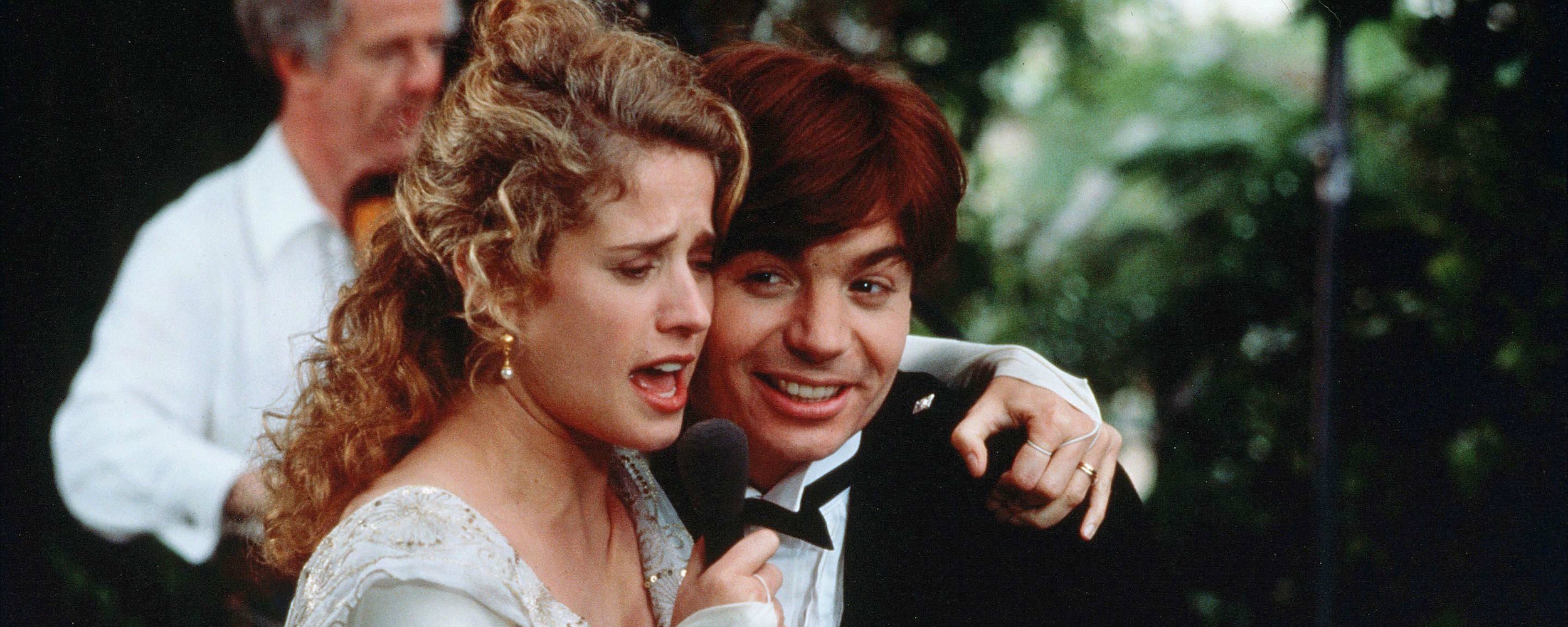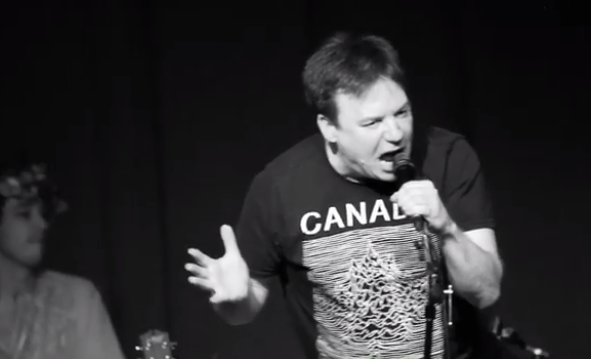Anyone who’s seen and loved the 1993 cult classic So I Married an Axe Murderer knows that its title doesn’t describe the plot literally. (If you haven’t seen it, you should know that there are spoilers ahead.) The dark romantic comedy features Mike Myers as Charlie MacKenzie, a sensitive beat poet who is deathly afraid of commitment, at least until he meets the love of his life: a beautiful butcher named Harriet, who may or may not be a serial killer. Charlie falls in love despite himself, but a story that’s all over the supermarket tabloids stokes his fears of getting involved with Harriet. A mysterious black widow called Mrs. X has left a trail of dead husbands across the country: a plumber, an Atlantic City lounge singer, a Russian martial arts expert in Miami. Harriet’s sister Rose, it turns out, is the real killer, quietly murdering her sister’s husbands out of jealousy and allowing Harriet to believe they up and ghosted her.
Axe Murderer started life as an idea for a quite different movie. It began in 1988, when a young screenwriter named Robbie Fox sold a pitch to then-Columbia executive Robert Fried called “The Man Who Cried Wife.” Crucially, in this original version, the protagonist really does marry an axe murderer. Speaking to Spin recently over the phone, Fox described the wry, distinctly Jewish outlook of his first script as “essentially Woody Allen in Hitchcock’s Suspicion,” or like Annie Hall, if Annie was a serial killer. “She was great at a dinner party: bright, funny, great cook,” Fox quipped. “Other than the stabbings, she was the perfect wife.”
Just about everyone involved in Axe Murderer agrees that Mike Myers is largely responsible the tone of the finished film, right down to the fixation on bohemian culture and the Britpop-heavy soundtrack. Fresh from a star-making turn in Wayne’s World, he used his new sway at the box office to refashion Fox’s idea into something broader, with more silly voices, sight gags, and potential mainstream appeal. In other words, something more recognizable as a Mike Myers movie, an archetype that would reach its essential form with Austin Powers a few years later. Myers drastically reworked the script with his writing partner Neil Mullarkey, and Charlie Byers the New York Jew became Charlie MacKenzie, the son of Scottish immigrants in San Francisco. The star also wrote a second role for himself in Charlie’s father Stuart, a sort of proto-Fat Bastard character who provides Axe Murderer with some of its most beloved moments by constantly berating his younger son about the giant size of his giant head, in a comical Scottish accent. (“It’s like an orange on a toothpick!”)
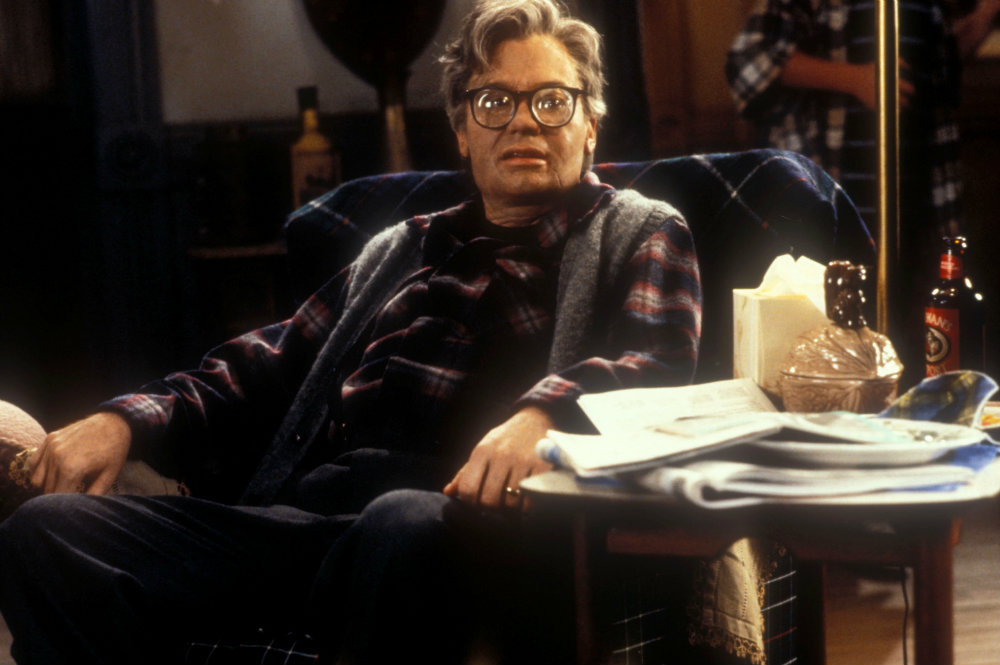 We know how this story is supposed to go. A writer with an original vision, and a Hollywood machine that tramples on it. A supremely confident young star who swings his weight around in order to get his own way. A niche highbrow comedy remade as a mass-audience product. So I Married An Axe Murderer should stink. Despite Myers’s presence, it bombed at the box office, and perhaps because of him, it was panned by many critics. (Roger Ebert called it “a mediocre movie with a good one trapped inside, wildly signaling to be set free.”) But by some miracle—perhaps the perfect alchemy of Fox’s cleverness and Myers’s undeniable screen-stealing power—Axe Murderer is actually fantastic, the kind of late-blooming movie that spawns endlessly repeated catchphrases and packed screenings years after its release. At recent Axe Murderer anniversary showings, Alamo Drafthouse temporarily lifted its strident “no talking” rule to allow fans to yell their favorite Axe Murderer quotes at the screen.
We know how this story is supposed to go. A writer with an original vision, and a Hollywood machine that tramples on it. A supremely confident young star who swings his weight around in order to get his own way. A niche highbrow comedy remade as a mass-audience product. So I Married An Axe Murderer should stink. Despite Myers’s presence, it bombed at the box office, and perhaps because of him, it was panned by many critics. (Roger Ebert called it “a mediocre movie with a good one trapped inside, wildly signaling to be set free.”) But by some miracle—perhaps the perfect alchemy of Fox’s cleverness and Myers’s undeniable screen-stealing power—Axe Murderer is actually fantastic, the kind of late-blooming movie that spawns endlessly repeated catchphrases and packed screenings years after its release. At recent Axe Murderer anniversary showings, Alamo Drafthouse temporarily lifted its strident “no talking” rule to allow fans to yell their favorite Axe Murderer quotes at the screen.
Perhaps Axe Murderer was slow to catch on because it was so ahead of its time. The scenes between Anthony LaPaglia’s wannabe Serpico detective and his new-agey police captain Alan Arkin gracefully walk a meta tightrope of deconstructing the tropes of ‘70s and ‘80s loose cannon cop films without coming off as overly self-aware and winking. The film also features a slate of great comedians in brief but memorable bit roles, including Phil Hartman, Stephen Wright, and a particularly inspired cameo by Charles Grodin. It inverts the priorities of your average ‘90s rom-com, placing camp and dark humor at the forefront without sacrificing the endearing romance at its center. Axe Murderer seemed poised to become an instant favorite among comedy nerds, but was kneecapped at the box office by its own title, leaving moviegoers confused about what the movie was actually about. But those nerds found the film eventually, thanks to the home video market, repertoire theater showings, and a stint in the late ‘90s and early ‘00s where it was seemingly constantly rerun by Comedy Central.
Twenty-five years after the film’s debut, Spin spoke with several of its key players—including Fox, producer Rob Fried, and co-stars Nancy Travis, Matt Doherty, Anthony LaPaglia, and Cintra Wilson—to find out how this unlikely classic came to be. (Myers himself was unavailable for an interview.) Hollywood movies are made by committee, and the industry’s history is filled with screenwriters who turned in sharp scripts that were eventually mangled to unrecognizability. So I Married an Axe Murderer presents an illustrative case: about just how far the finished product can stray from what a writer had in mind, and about how those changes might sometimes actually work in the project’s favor. Once in a while, against all odds, the movie magic works.
***
At the time, Robbie Fox was none too happy about the changes to his script, which unfolded across several years, a dozen-plus rewritten drafts, and an arbitration case over writing credit that he ultimately won. Interviewed for a scathing Los Angeles Times article about Axe Murderer in 1993, he implied that the process amounted to an “injustice.” In the decades since, he’s mellowed out and resigned himself to the realities of life in the Hollywood machine, though he remains plenty sardonic. “If that happened to me today, it wouldn’t faze me,” Fox said. “I’m really, honestly, just happy to be around. If they send me a sweatshirt that has the name of the movie on it, I’m thrilled. If they remember to pay me. I really am at a much lower bar now.”
Fox imagined Charlie as “the most nervous man in the world, who finally found something he can trust,” except this is the one time he’s actually right to be paranoid. The character is named after Fox’s father, Charles Fox, a renowned film and TV composer who co-wrote “Killing Me Softly With His Song” and a host of iconic sitcom theme songs in the ‘70s. Fox describes him as a doomsday prepper long before there was a word for it: “Way before it was fashionable, my worrywart dad Charlie made us keep earthquake safety helmets and flashlights under our bed. We had regular battery checks and we had water and Cup O’ Soup — enough to wait out Armageddon.”
You can glean a lot about the original vision for Axe Murderer from the list of actors who were interested in the lead role before Myers signed on. It was a murderers row of neurotics: Woody Allen, Garry Shandling, Albert Brooks, and (perhaps less indicatively) Chevy Chase. At one point, the studio committed to Shandling, but backed out. Producer Robert Fried wanted to keep Shandling, and told Spin that he eventually left his job as an executive at Columbia over the disagreement. Next came Allen, who Fox attempted to woo by showing up unannounced at Michael’s, the Manhattan bar where Allen sometimes played jazz clarinet on Mondays. (He wasn’t there that night, so Fox sent him a letter.) According to Fox, Allen was on board to star for a mere three weeks before talks with the studio broke down over disagreements about money. “Robbie wrote a terrific script, and it was written for Jewish paranoia,” Fried said, summing up the tone.
That tone changed with Myers’s arrival. At the time, he wanted “very much to be thought of as a writer as well as a performer,” an anonymous former colleague told the L.A. Times. He quickly set about writing, refashioning the script in his image. The changes weren’t all bad, or even mostly. Over the years, Fox has changed his perspective about the experience, in part because of how funny the finished product turned out to be. He calls Myers “a brilliant and hilarious guy,” and ranks the first two Austin Powers movies among the funniest films of all time.
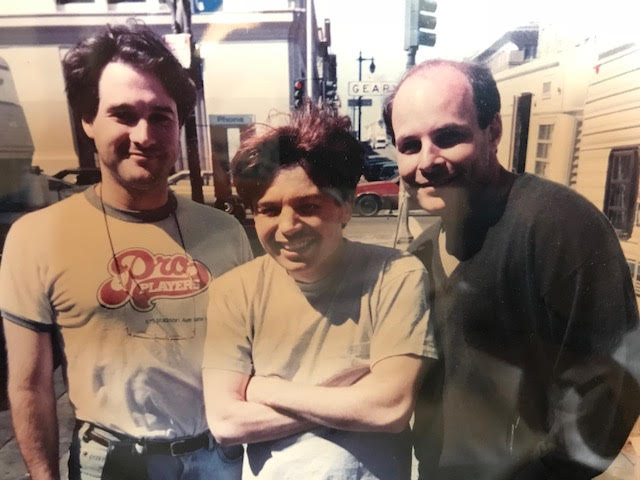
Axe Murderer is even more charming for its status as a relative aberration in its star’s filmography. Aside from his uproarious performance as the Scottish father Stuart, Myers is not spending the bulk of the movie hidden under latex makeup and an absurd wig. He’s not lost in a bizarre character, like an unfrozen spy from the swinging ‘60s, a giant green ogre, or whatever the hell he was supposed to be in The Love Guru. Charlie MacKenzie is basically your average Gen X liberal arts college graduate: super into Kerouac, always cracking wise to overcompensate for feeling tense, vulnerable, or insecure. Unlike most of Mike Myers’s other characters, Charlie actually looked a hell of a lot like Mike Myers.
***
The reworked script may have changed the ending, but it retained the appealing ambiguity of Charlie’s love interest, Harriet. The role required a performance that could convince the audience of Harriet’s well-rounded charm and natural chemistry with Charlie, but also of the possibility that she is a modern-day Lizzie Borden. After brief looks at Sharon Stone and Kim Basinger, Fox and Fried were piqued by Nancy Travis, who’d just come off an equally complex comedic role as a mafioso’s mistress in Jonathan Demme’s 1988 film Married to the Mob. She and Fried were dating at the time, married shortly after filming, and are still together. (“I’m reasonably sure she’s not an axe murderer,” Fried says.) The challenge of the role was “how to be the perfect woman, who’s fallen in in love with this guy and at the same time play questionable things that could lead you to believe, ‘Oh my gosh, maybe she is an axe murderer,’” Travis told Spin.
Travis’s job was even more difficult than Myers’s. Whereas he could make his mark on a scene with one of his impressions—or, say, by using a piece of meat from the butcher shop to recreate the chestburster scene from Alien—Travis conveyed Harriet’s interior conflicts by letting emotions flicker briefly across her face. Like Charlie, Harriet also had a fear of marriage, but her fear is harder to pin down. Is she uneasy because she knows she’s going to eventually chop up this sweet poet? Or, as the film later reveals, do her moods shift because all of her husbands leave her—murdered by her jealous sister, unbeknownst to her? Each of Travis’s expressions serve a dual purpose: they have to communicate both fear and malice, and they have to be equally convincing of each. “I won’t say it was an easy movie to make, but it was a fascinating one on a lot of levels. And a lot of it has Mike’s pace and tone and sensibilities added,” she said. “He influenced a lot of that movie, in a good way. The things that people quote about that movie and the things that people say about it—a lot of it came to him so quickly.” Among the most memorable of these additions are Myers’s Scottish-accented shouts of “Head! Move!” at his prodigiously-domed onscreen younger son, which Travis says strangers still quote to her when she’s out in public.
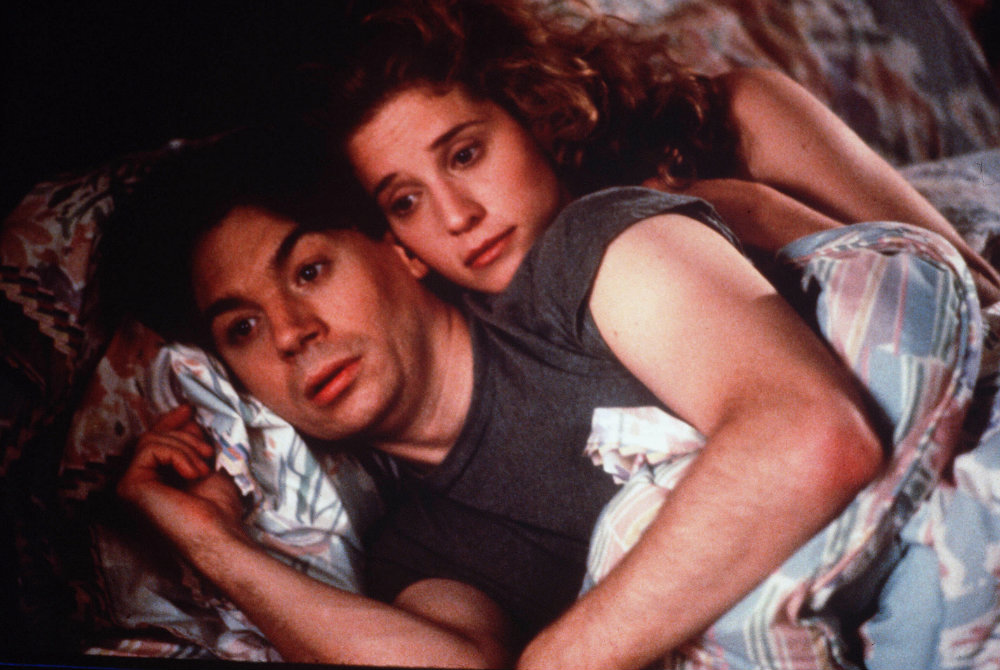
The owner of that giant head was Matt Doherty, who turned 16 while making the movie and got to spend his birthday “in San Francisco, walking around Fisherman’s Wharf, eating chocolate.” He is a remarkably good sport about being the butt of jokes revolving around his appearance. The way he sees it, there are two different personalities in comedy: the person who throws the egg and the person who catches the egg with their (massive) face. “I’m the latter,” Doherty told Spin, without any apparent chagrin. “I distinctly remember every moment on that set.” He zeroed in specifically on a fan-favorite scene that takes place in Charlie’s family home. It was particularly challenging to shoot, because the splitscreen technology that made it possible for Myers to play two characters in the same scene was still being developed. “It seems really easy to do now, but back then it took a long time to shoot,” Doherty said, described a scenario in which the script supervisor was painstakingly documenting the location of every object in the room with Polaroids, “because if anything moved it would mess up the math.”
“We had that reality going on while [Myers] had what I believe to this day is one of the best performances of all time. And it was mostly improv,” Doherty added. “I don’t think he did the same thing twice, and when he actually did manage the same thing, Anthony LaPaglia would bust out laughing. He blew take after take.” LaPaglia, who played Charlie’s best friend Tony, confirmed Doherty’s story about his giggle fits. Like Doherty, he says he has nothing but fond memories of working on Axe Murderer, especially with his onscreen boss Alan Arkin. Shoots typically ended with Myers roping LaPaglia into makeshift games of street hockey, where LaPaglia would play goalie. He admits that he regularly had his ass kicked, despite his background as a pro soccer player in his native Australia.
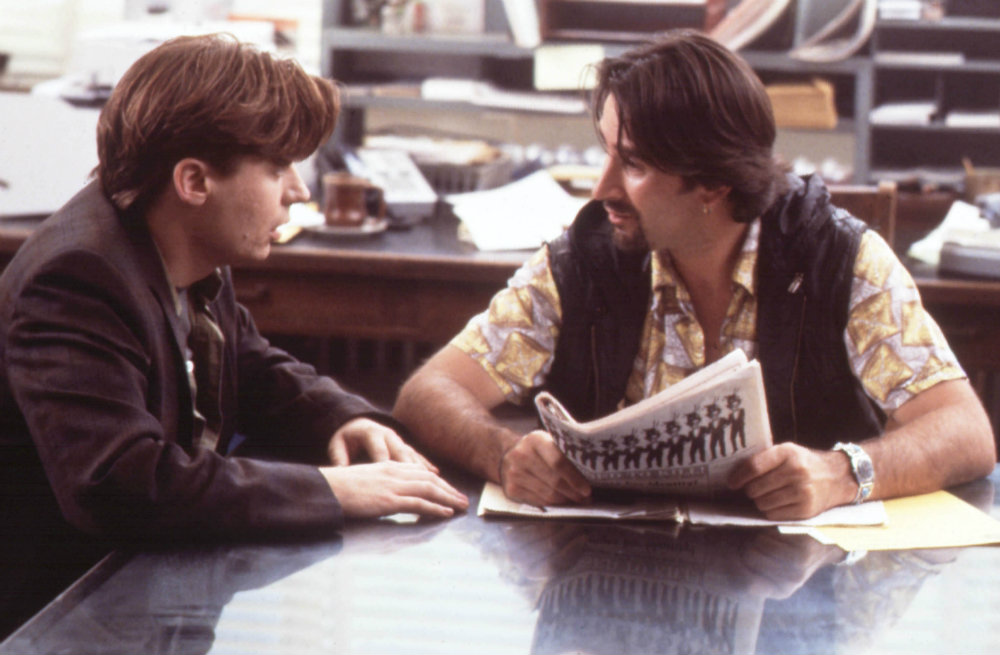 He has fond memories of a scene in which Charlie’s mom [played by Brenda Fricker] tries to make out with his character: “In the rehearsal, she gave me a kiss on the cheek, and in the take, she just smacked one big one right on my lips…she totally got me by surprise.” All in all, Lapaglia said, working on Axe Murderer was “a tremendous amount of fun.”
He has fond memories of a scene in which Charlie’s mom [played by Brenda Fricker] tries to make out with his character: “In the rehearsal, she gave me a kiss on the cheek, and in the take, she just smacked one big one right on my lips…she totally got me by surprise.” All in all, Lapaglia said, working on Axe Murderer was “a tremendous amount of fun.”
***
Not everyone thought so, apparently. According to Fried, the strain of Axe Murderer didn’t abate when the script issues were settled. He used words like “intense” and “contentious” when describing the atmosphere on set, and attributed a great deal of the tension to disagreements between Myers and director Thomas Schlamme. “There was just so much drama around the making of that movie,” Fried said. A 2008 Myers profile in Entertainment Weekly described his “reputation for being difficult to work with,” which collaborators like Wayne’s World director Penelope Spheeris and Cat in the Hat costar Amy Hill have gone on record to discuss. Myers had an expression he liked to use on the set of Axe Murderer, according to Fried: “lay down tracks, one-eyed jacks.” It meant that if he saw Schlamme had set up tracks or a dolly for a moving camera shot, he’d retreat to his trailer and wouldn’t come out until the tracks were gone.
Fried explained: “If you put tracks down, that means you’re going to move the camera, and if you move the camera, you’re only going to film half of the thing. You’re only going to get one eye. And if you want the joke to be funny, you have to shoot the actor directly while he’s delivering the joke so you can see both eyes. ‘Lay down tracks, one-eyed jacks,’ was Mike’s way of saying Tommy is not going to make it funny. The camera is the star, not the joke. “For the joke to be funny, stop the camera, turn on the lights, and shoot the comedian straight on. Let the joke happen, pause for a reaction, and then move on. This is Mike’s thesis. And almost in spite of Mike, Tommy in every scene had lots of light, moved the camera, there was music everywhere. Mike thought that Tommy was undermining his comedy.”
According to Fried, the clash boiled down to Schlamme working in service of the filmmaking process, in that he “was committed to lighting and camera work and acting,” versus Myers working in service of the joke. (Like Myers, Schlamme was not available for an interview.) “To Mike, the joke was the highest form of art,” Fried said. “And he was a lifelong student of how to film a joke.”
Myers’s longtime writing partner Neil Mullarkey, with whom he worked on the Axe Murderer rewrites, had a different take. “Both were working in service of the audience,” Mullarkey said in an email. He workshopped the changes to Robbie Fox’s script with Myers in the months leading up to the production, and was on set reworking material during the shoot. “Mike is the funniest person I have ever worked with,” Mullarkey added. “He is also the most diligent…It’s no surprise that, having re-imagined and re-written the screenplay, Mike should discuss things with Tommy, to which Tommy was entirely open.”
Mullarkey and Myers continued to rework the script even as Axe Murderer began shooting. The writer and cultural critic Cintra Wilson, who had a brief role, remembers this dynamic well. Wilson was initially supposed to play an artsy poet who performed at the same coffee house as Byers, while wearing a burlap sack. “The Sack,” as the character was known, didn’t make it into the film, and she instead ended up playing the coffee house’s emcee. “There was a lot of trial and error,” Wilson recalled. “They shot a lot of stuff and there’s a ton of magic on the cutting room floor.”
Wilson was on set for the shooting of Charlie’s “Woman” poem, one of Myers’s most memorable bits from the film. She said the scene “took 14 hours to shoot” because Myers kept flubbing the takes, to the point that she suspected he was doing it on purpose. “Everyone was like ‘Jesus Christ, Mike,’” Wilson said. The experience of hearing one comedy bit repeated that many times stayed with her for years. “I hear it in my sleep sometimes.” Axe Murderer ends in the coffee house. According to Doherty, the final scene initially featured the entire Mackenzie family, not just Charlie. In this version, Doherty’s character had morphed into a little beatnik, just like his brother, with dreadlocks hanging from his gargantuan melon. He wonders if the ending was rewritten because Myers didn’t want to lean too heavily on the giant head sight gag: “There’s a rule in comedy where you don’t want to go to the well one too many times.” Whatever happened, he’s pretty sure there’s still a few photos of him with dreadlocks lying around somewhere.
***
After a series of mixed reactions from test audiences, reshoots, and delays, So I Married an Axe Murderer premiered in July 1993, five years after Fox sold his first script for The Man Who Cried Wife. It made about $11 million at the box office, falling short of its reported $20 million budget by nearly half. Reviews were decidedly lukewarm as well. The New York Times offered faint praise for Axe Murderer’s “crisply professional” look but seemed more enthused with bit roles from Alan Arkin and Steven Wright than it was with the film’s stars. Entertainment Weekly wasn’t so kind: “In some perverse, self-destructive way, So I Married an Axe Murderer seems to be asking us to laugh at how not-funny it is.” Axe Murderer seemed primed for status as a footnote to Myers’s ascendant career. But as Fried put it, the film “had a great life” on the home video market, and slowly found a devoted audience. (Google the film now and you’re as likely to find enthusiastic re-appraisals on websites like Den of Geek as you are the original reviews.) According to Fox, the enduring cult of Axe Murderer was enough to spark recent interest in a sequel and TV adaptation. The latter was particularly exciting for him, because it meant the possibility that he could incorporate the more subversive tone of his original script—and hey, maybe even have the protagonist marry an axe murderer.
When he heard from Sony Pictures that a TV series could be in the works, he envisioned something like “Dexter, but a romantic comedy,” or Mad About You, with a serial killer swapped in for Helen Hunt’s role. He explained that the plot would unfold slowly, and Charlie would not discover Harriet’s homicidal streak until the second or third season. At that point, he’s in deep enough that it’s not a dealbreaker, and wonders whether all the murdering could be “just a phase.” Considering the recent small-screen and streaming adaptations of films from the same era, like Fargo and She’s Gotta Have It, it’s not an outlandish idea. But sadly, the Axe Murderer series never got off the ground, thanks to what Fox described as an executive shakeup following the Sony hacks, which “kind of left my project abandoned.”
Fox still holds hopes to revisit the idea someday, but he’s working on other things in the meantime. He co-wrote the forthcoming Daddy Day Care sequel Grand-Daddy Day Care. He says he has another comedy script with a major star attached that’s close to production, and a smaller film that he plans to direct. If the experience of making Axe Murderer was sometimes disheartening, it wasn’t enough to sour him on the industry entirely. So what happens if one of his current projects goes through a similar wringer of changes? Hollywood is a notoriously difficult place for a writer, but the rewards of working within the machine are real. A few decades inside have changed his outlook. “It’s a collaborative business, and it’s a job. You work for the director or the studio,” he said. “If you want to make all the decisions, you should write for off-off-Broadway, or write short stories. But they don’t pay. I can warn you, they don’t pay.”

